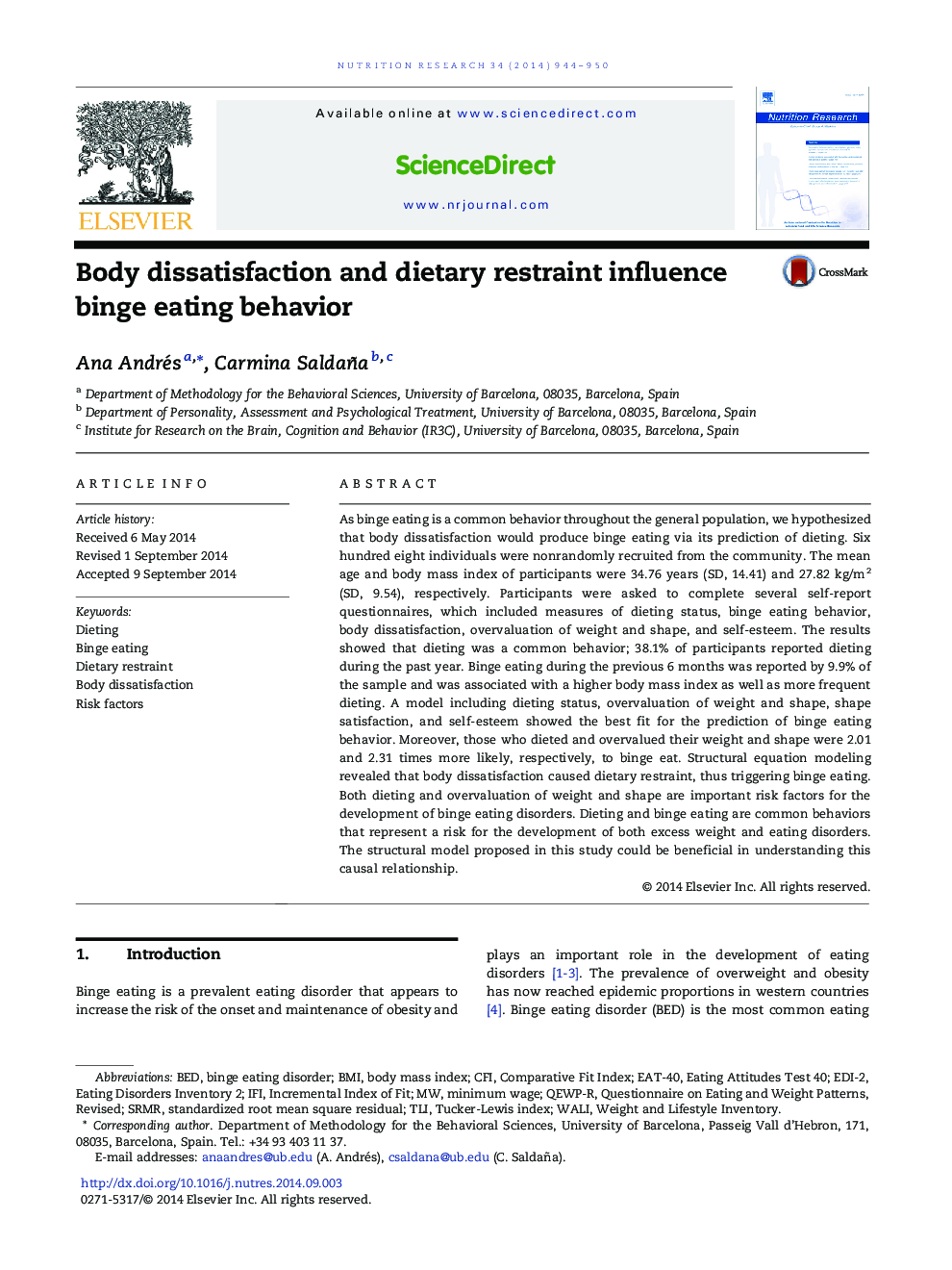| Article ID | Journal | Published Year | Pages | File Type |
|---|---|---|---|---|
| 5904587 | Nutrition Research | 2014 | 7 Pages |
Abstract
As binge eating is a common behavior throughout the general population, we hypothesized that body dissatisfaction would produce binge eating via its prediction of dieting. Six hundred eight individuals were nonrandomly recruited from the community. The mean age and body mass index of participants were 34.76 years (SD, 14.41) and 27.82 kg/m2 (SD, 9.54), respectively. Participants were asked to complete several self-report questionnaires, which included measures of dieting status, binge eating behavior, body dissatisfaction, overvaluation of weight and shape, and self-esteem. The results showed that dieting was a common behavior; 38.1% of participants reported dieting during the past year. Binge eating during the previous 6 months was reported by 9.9% of the sample and was associated with a higher body mass index as well as more frequent dieting. A model including dieting status, overvaluation of weight and shape, shape satisfaction, and self-esteem showed the best fit for the prediction of binge eating behavior. Moreover, those who dieted and overvalued their weight and shape were 2.01 and 2.31 times more likely, respectively, to binge eat. Structural equation modeling revealed that body dissatisfaction caused dietary restraint, thus triggering binge eating. Both dieting and overvaluation of weight and shape are important risk factors for the development of binge eating disorders. Dieting and binge eating are common behaviors that represent a risk for the development of both excess weight and eating disorders. The structural model proposed in this study could be beneficial in understanding this causal relationship.
Keywords
Related Topics
Life Sciences
Biochemistry, Genetics and Molecular Biology
Endocrinology
Authors
Ana Andrés, Carmina Saldaña,
